#Emilie Flöge
Text
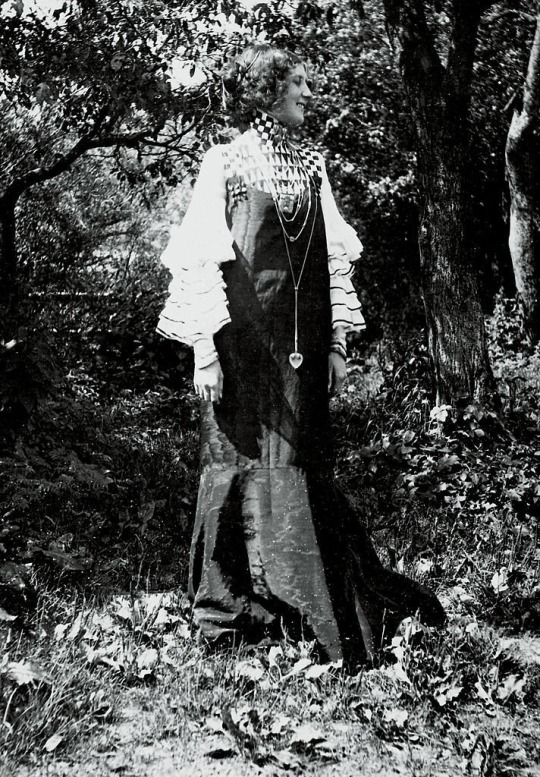
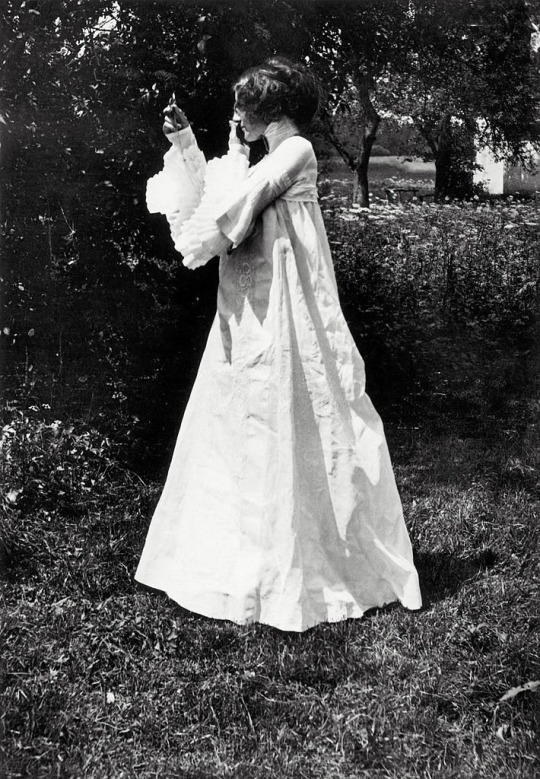
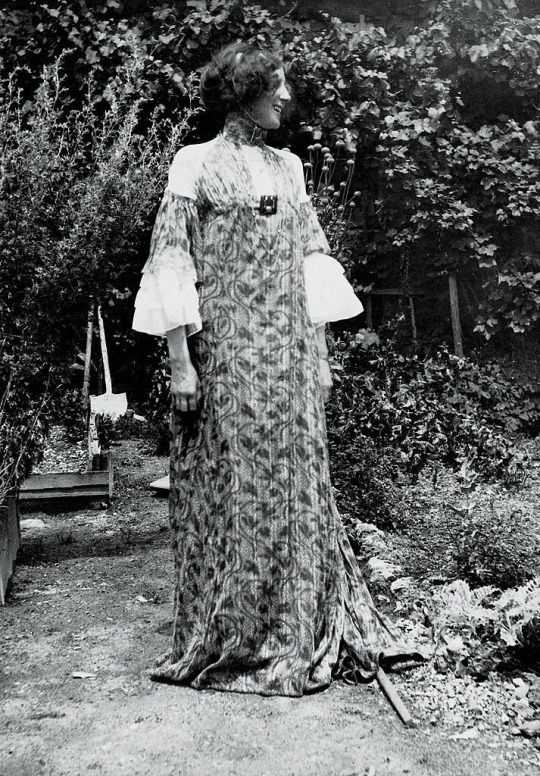
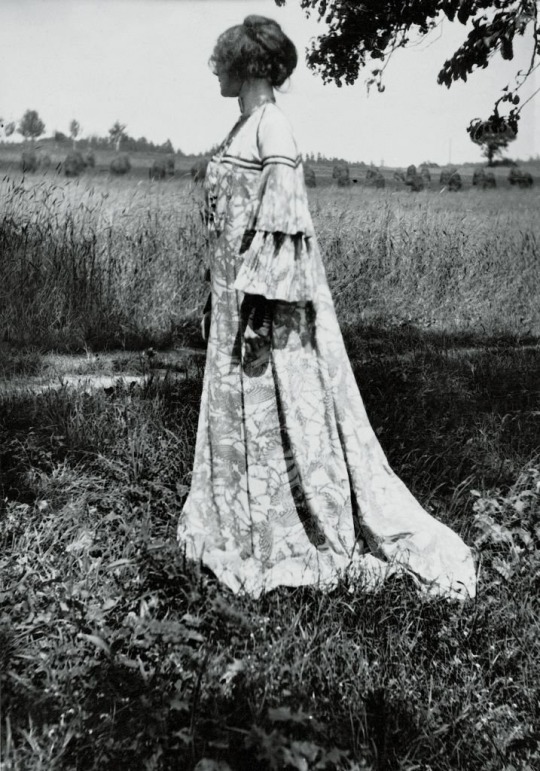
Four photos of fashion designer Emilie Flöge (1874-1952).
558 notes
·
View notes
Text

Anonymous. Gustav Klimt, Emilie und Helene Flöge, Litzlberg at Attersee, Austria, 1906 | src Ostlicht
"This private photograph is captivating because of the contrast between the different silhouettes of the three figures, which reveals the emancipatory radicalism of the reform dress. Implicitly, as one might say, this also "quotes" the design element of repeated curved lines, as found in many of Gustav Klimt's compositions."
read more on wordPress
#gustav klimt#emilie flöge#helene flöge#schwestern flöge#emilie floge#vintage photography#vintage photo#family photos#1900s#attersee#lake#jetty#waterscape#dock#wiener werkstaette#Wiener Werkstätte#Wiener Werkstatte#Wiener Werkstaette#Vienna Secession#1900s fashion
264 notes
·
View notes
Photo





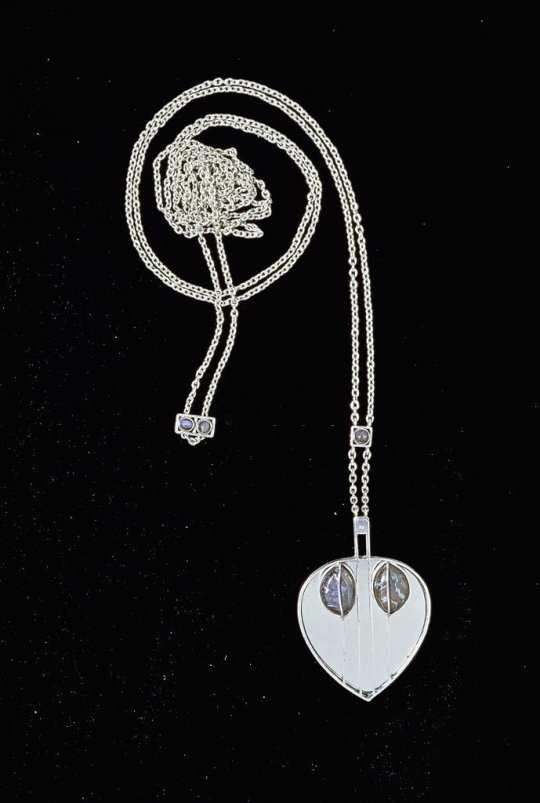

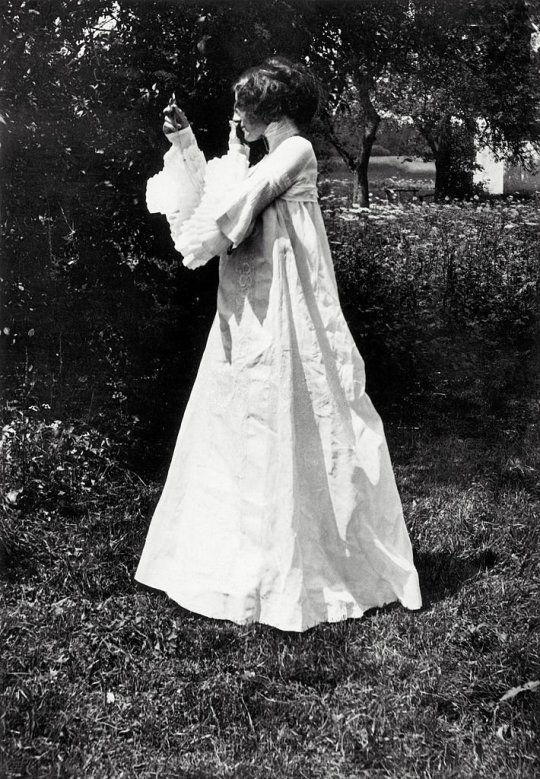

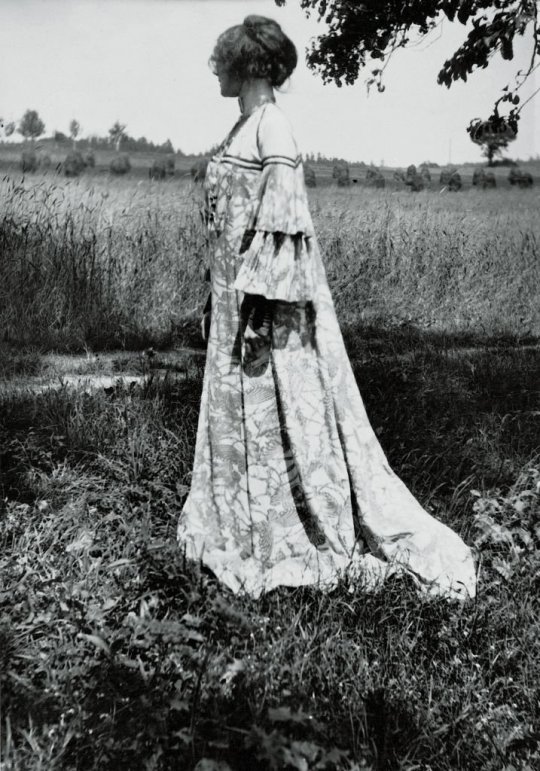
Austrian fashion designer Emilie Flöge, 1900s
She was Gustav Klimt’s muse, lover, and lifelong companion. The necklaces were gifts from Klimt.
Coco Chanel is often heralded as the sole designer to revolutionize modern womenswear, and it’s true that she popularized trousers and comfortable two-piece suits at a time when upper-class women had limited sartorial options. But by the time Chanel opened her salon at 31 Rue Cambon in Paris in 1910, Flöge had been producing cutting-edge designs in Vienna for several years, already carving out new roles for women in the industry with her empire-waist garments, wide sleeves and intricately-detailed panels inspired by Hungarian and Slavic embroidery, marking a departure from the restrictive, corseted dresses that were the mainstays for the time.
In 1904, Emilie and her two sisters opened the fashion house Schwestern Flöge on Vienna’s bustling Mariahilfer street—an unusual venture for three unmarried, thirty-something women to take on then. Klimt and Flöge’s relationship was also extremely unusual: they were romantic partners that never got married nor had children, and maintained a level of independence unprecedented for the time.
via
520 notes
·
View notes
Text
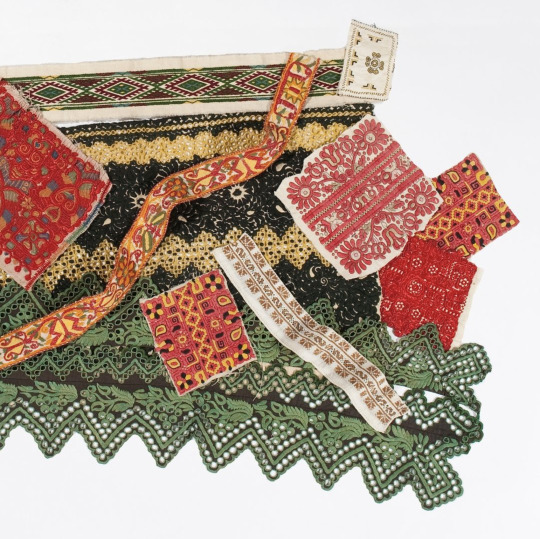
Eastern European fabric trimmings and embroidery scraps from the collection of Emilie Flöge (Austrian, 1874–1952)
Volkskundemuseum Wien
(Catalogue nos. ÖMV/78704, -05/001-2,-08,-14,-19,-82,-84,-94, 78805/002)
#emilie flöge#österreich#czechia#czechoslovakia#austria#slovakia#slovensko#česko#československo#textiles
82 notes
·
View notes
Text
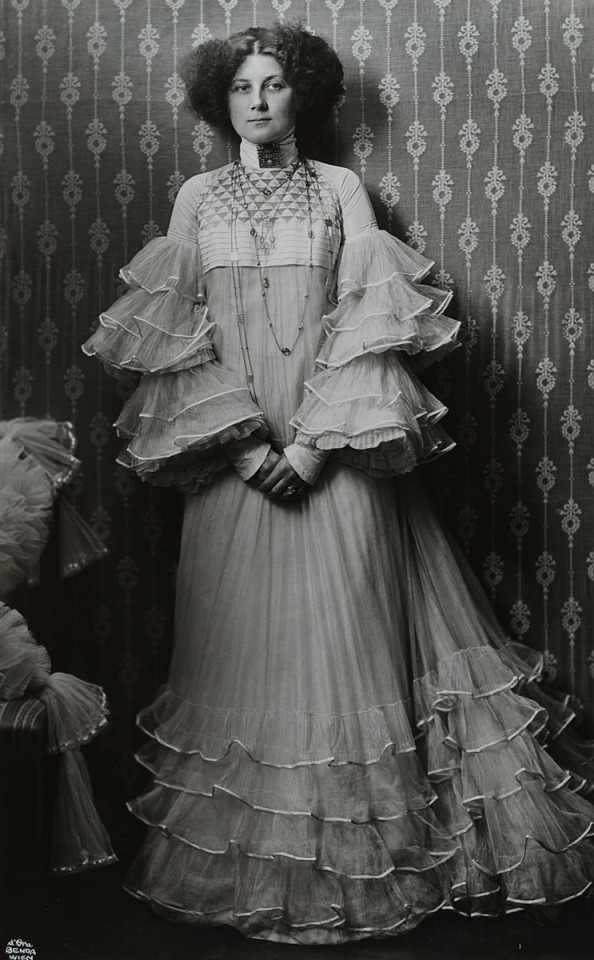
1909 Emilie Flöge by Atelier d'Ora/Arthur Benda/Madame d'Ora (Museum für Kunst und Gewerbe - Hamburg, Germany). From tumblr.com/fashionsfromthepast/743745372176957440? 743X1200.
#1909 fashion#1900s fashion#Belle Époque fashion#Edwardian fashion#Emilie Flöge#Atelier d'Ora/Arthur Benda/Madame d'Ora#clerical neckline#close skirt#ruffles#pleats
46 notes
·
View notes
Photo

Emma Bacher. Gustav Klimt, Emilie Flöge, Therese Flöge Paulick. Seewalchen. Austria. 1912
I Am Collective Memories • Follow me, — says Visual Ratatosk
#BW#Black and White#Preto e Branco#Noir et Blanc#黒と白#Schwarzweiß#retro#vintage#Emma Bacher#Gustav Klimt#Emilie Flöge#Therese Flöge Paulick#Seewalchen#Austria#1912#1910s#10s
36 notes
·
View notes
Text
the kiss by gustav klimt
"The Kiss" by Gustav Klimt is believed to have been inspired by Klimt's own tumultuous love life and the Art Nouveau movement of the late 19th century. It's thought to depict the artist himself and his companion, Emilie Flöge, who was a prominent figure in Vienna's artistic circles.
The painting captures a moment of intimate embrace, symbolizing the union of two souls in love. The couple's bodies are intertwined in a sensual manner, while their faces remain obscured, adding an air of mystery and universality to the scene. The use of gold leaf throughout the painting adds a sense of opulence and timelessness, elevating the romantic encounter to a transcendent experience.
While the exact inspiration and narrative behind "The Kiss" remain somewhat elusive, its enduring popularity and significance lie in its ability to evoke emotions of passion, love, and beauty, resonating with viewers across generations.
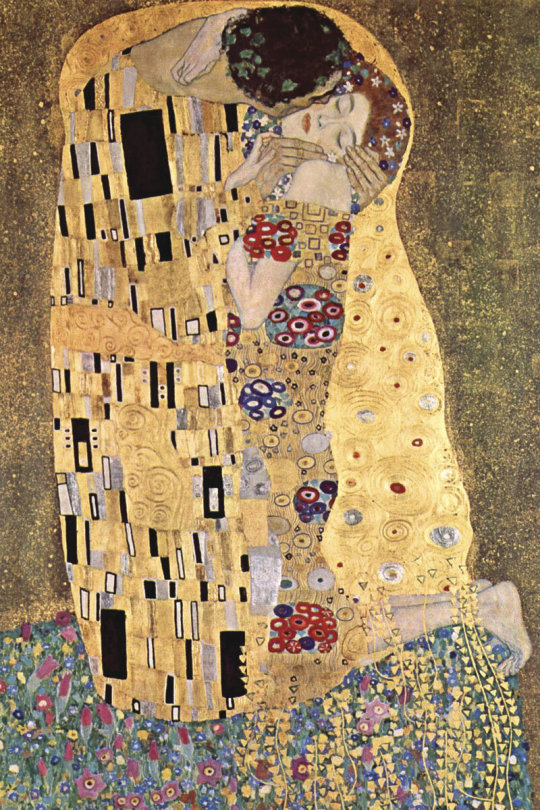
#art#artist#the kiss#gustav klimt#oil on canvas#oil painting#painting#art nouveau#arts and crafts movement#vienne secession#love#intimacy#sexuality#emilie flöge#galerie belvedere#19th century#gold leaf#romantic#romantic encounter#passion#beauty#abstract#yellow#gold#austria#“If you can not please everyone with your deeds and your art#please a few“#oil and gold leaf on canvas#art aesthetic#timeless
12 notes
·
View notes
Text

19 notes
·
View notes
Text

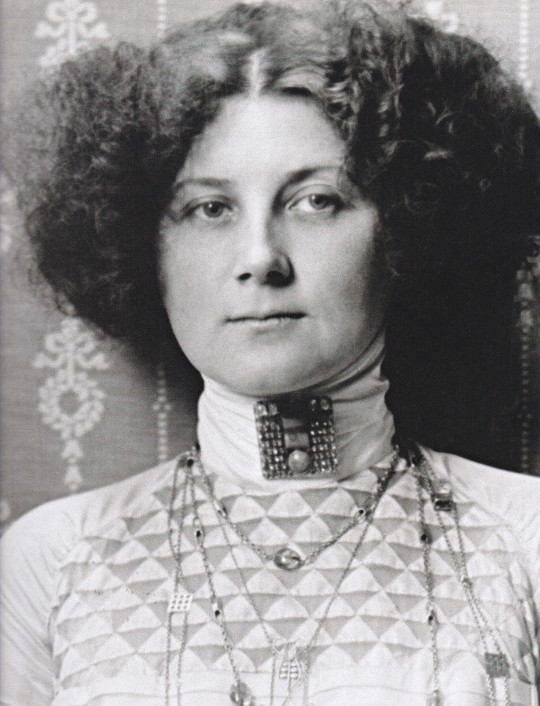



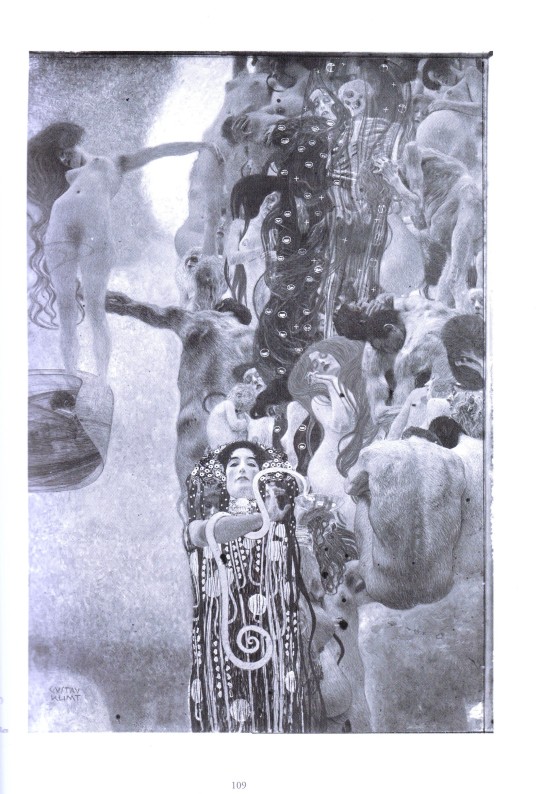
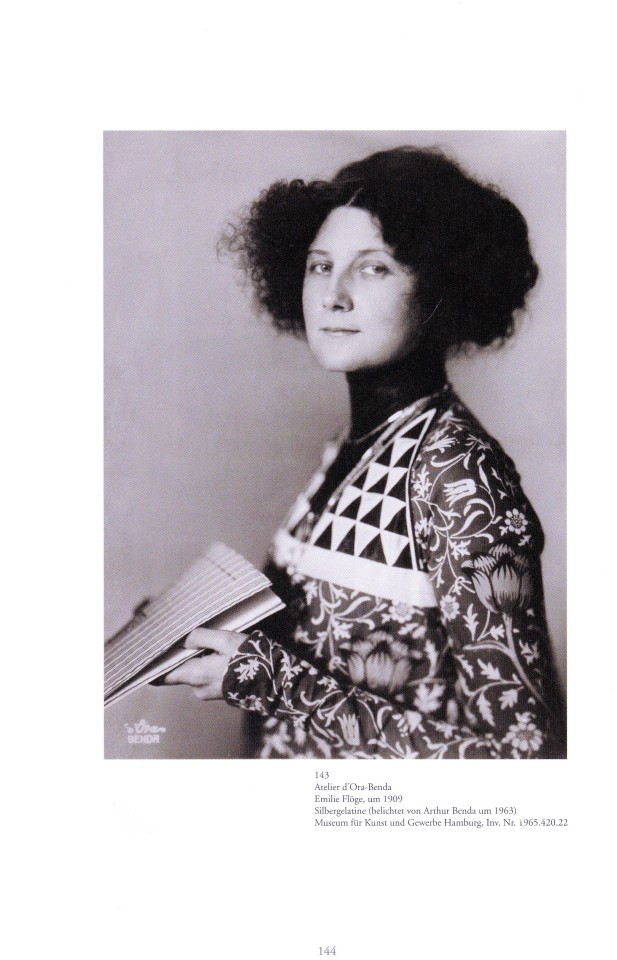



Gustav Klimt & Emilie Flöge
Fotografien
Agnes Husslein-Arco, Alfred Weidinger
Prestel Verlag, München 2012, 240 pages, 24 x 28,7 cm, iSBN 978-3-7913-5254-1 Deutsche Ausgabe
euro 50,00
email if you want to buy [email protected]
Die Wiener Modeschöpferin Emilie Flöge war nicht nur Gustav Klimts langjährige Geliebte, sondern auch Muse und Modell für einige seiner schönsten Gemälde. Das Paar stand im Zentrum jenes legendären Künstlerkreises, der um die Jahrhundertwende von Wien aus die Kunst in ganz Europa beeinflusste. Zu diesem Kreis gehörten auch zahlreiche Fotografen, die die rasante Entwicklung der modernen Technik nutzten und das Leben der Künstler und Bohemiens dokumentierten. Der vom Wiener Belvedere herausgegebene Band präsentiert erstmals sämtliche Fotografien von Klimt mit Flöge und zeichnet damit nicht nur ein faszinierendes Bild vom Leben dieses Paares und seiner Zeit, sondern spürt auch dem Einfluss nach, den bildende Kunst und Fotografie wechselseitig aufeinander ausübten.
Emilie Flöge was only a teenager when she met the painter Gustav Klimt, but their friendship soon evolved into a complex and loving relationship that lasted the rest of their lives. Alfred Weidinger, an acclaimed expert on Klimt and his contemporaries, has compiled an exhaustive collection of photographs relating to the artist and his designer muse. While Klimt took many of these shots, other photographers include Carl Schuster, Victor von Spitzer, Hugo Henneberg, Pauline Kruger Hamilton, Anton Josef Trcka (Antios), and unknown individuals who had access to the couple’s private lives. Presented chronologically, they offer insight into the creatively charged world that Klimt and Flöge inhabited—a world they influenced with their enormous talent and passions.
12/07/23
orders to: [email protected]
ordini a: [email protected]
twitter:@fashionbooksmi
instagram: fashionbooksmilano
designbooksmilano
tumblr: fashionbooksmilano
designbooksmilano
#Gustav Klimt#emilie flöge#designer muse#photography collection#couple's private lives#Alfred Weidinger#rare books#fashionbooksmilano
16 notes
·
View notes
Text
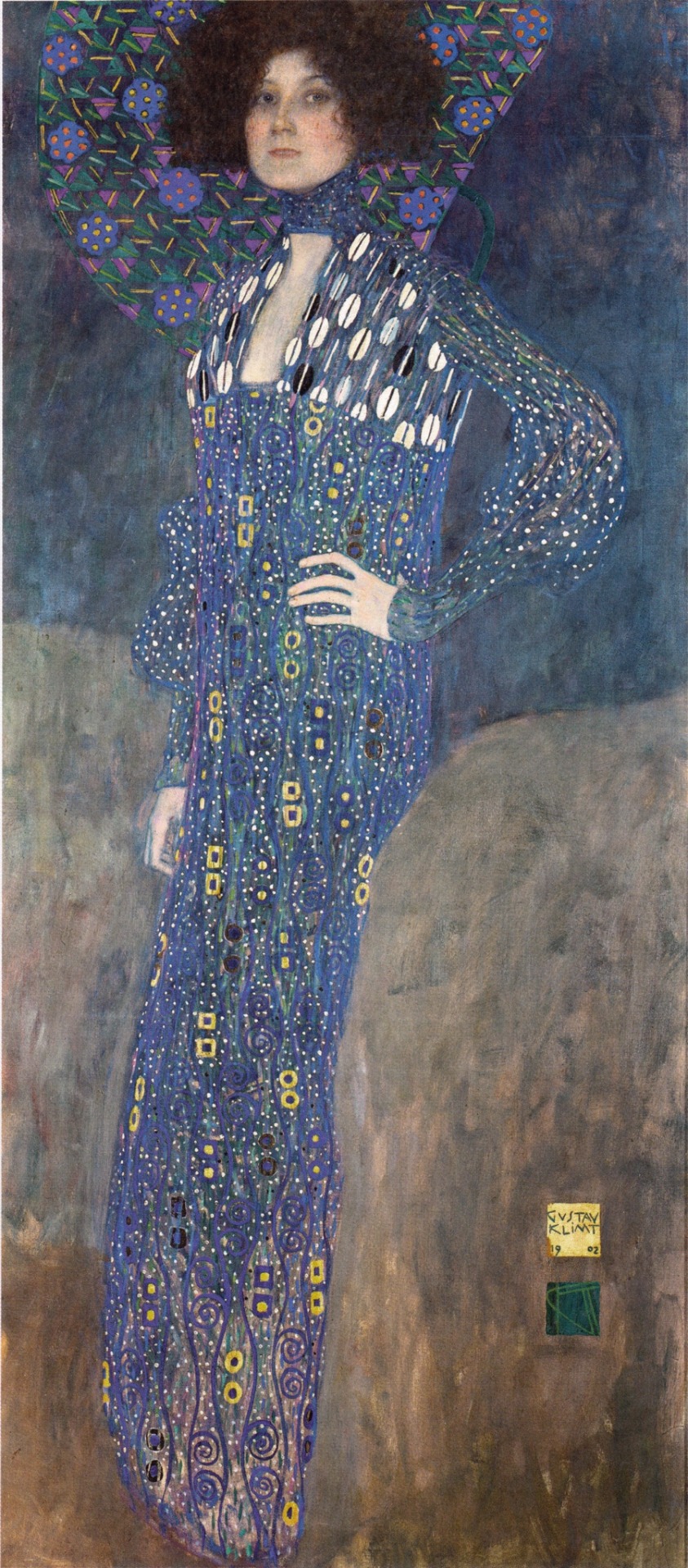
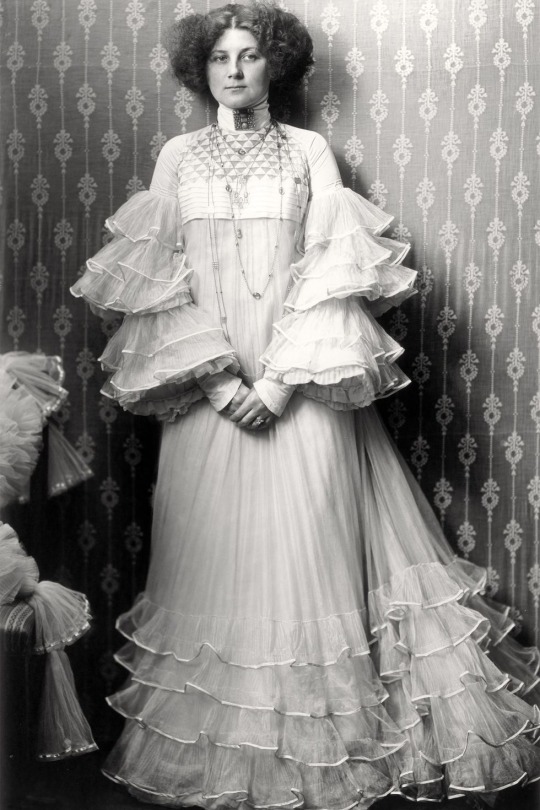
left: Portrait of Emilie Flöge by Gustav Klimt
right: photograph of Viennese fashion designer Emilie Flöge
Emilie Flöge is best known for being the life partner and muse of painter Gustav Klimt, but she was an incredibly talented artist in her own right. Flöge was famous for her unconventional, flowing gowns that were a stark departure from the restrictive corsetry that was in vogue at the time.
#gustav klimt#emilie flöge#art history#fashion history#art noveau#1900s fashion#history facts#art history facts#feminist history#historical fashion#austrian art#she is an icon#she is superior to coco chanel in every way
24 notes
·
View notes
Text

Portrait of Emilie Flöge, Gustav Klimt (1902) Wien Museum in Vienna.
#modern art#art#painting#art history#art nouveau#artgallery#artists on tumblr#artwork#art style#illustration#oil on canvas#gustav klimt#austria#vienna#wien#emilie flöge#gold#20th century
50 notes
·
View notes
Text

Dress design by Emilie Flöge as recreated by the Shanghai artist and designer Han Feng for the "Seven Muses of Gustav Klimt" exhibition , 2016
#han feng#emilie flöge#emilie floge#mdpcostume#costume#costume design#fashion#early 20th century#20th c. costume#gustav klimt#costume recreation#costume reconstruction
27 notes
·
View notes
Text
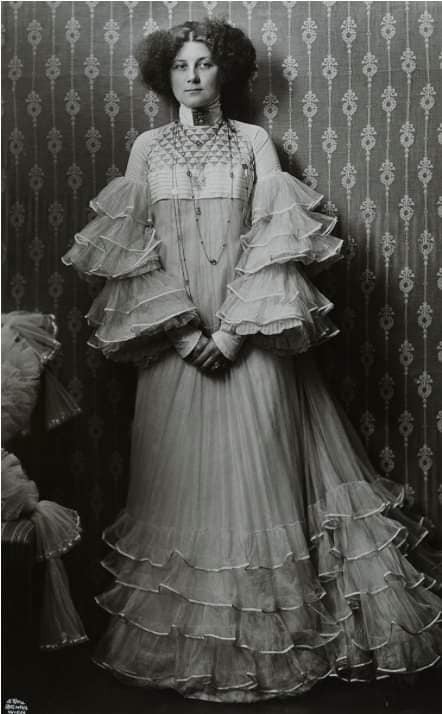
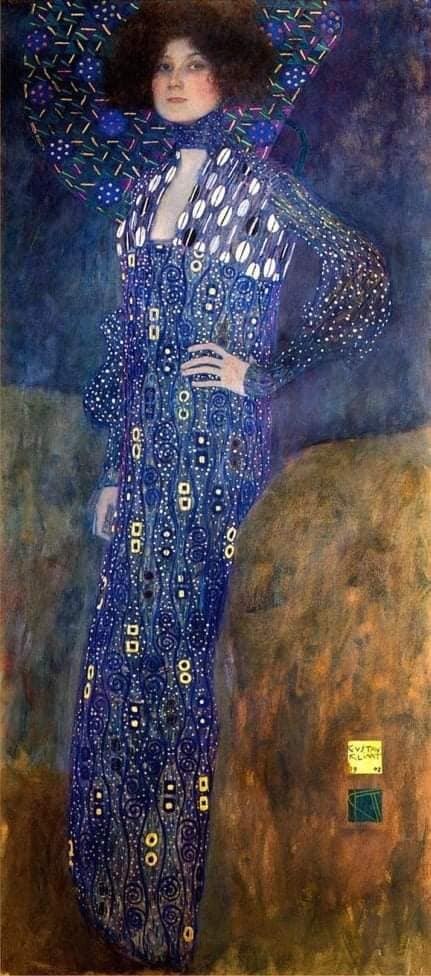
Gustav Klimt (Austrian, 1862-1918)
Portrait of Emilie Flöge, 1902)
Oil on canvas, 181 x 84 cm
Wien Museum, Vienna, Austria
26 notes
·
View notes
Text
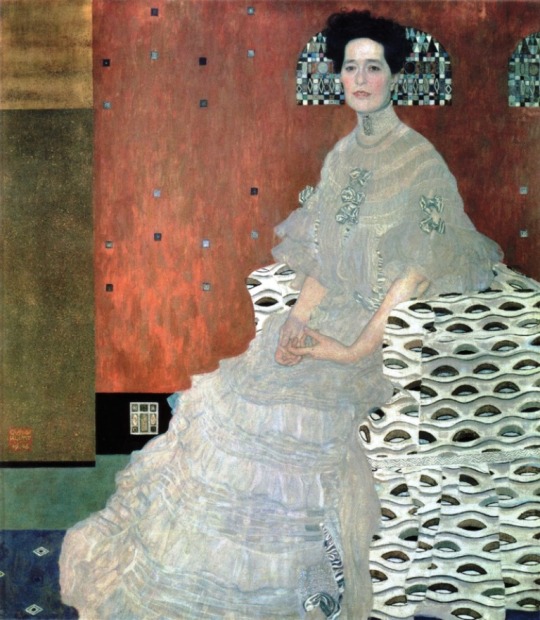
Gustav Klimt. Fritza Riedler 1906
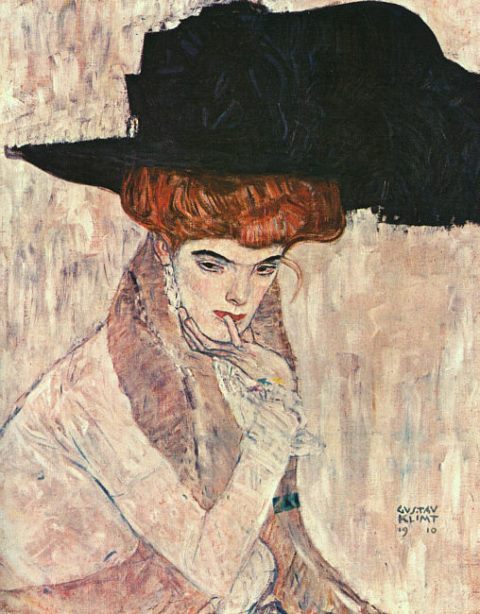
Gustav Klimt. Le Chapeau de plume noir 1910

Gustav Klimt and Emilie Flöge
4 notes
·
View notes
Text

Ca. 1910
#Emilie Flöge#Gustav Klimt#1910#Lake Attersee#villa oleander#designer#artist#couturier#dresses#painter
2 notes
·
View notes
Text

As both maker and muse, avant-garde fashion designer Emilie Flöge’s influence weaves through the history of Vienna and contributes to its allure as a cultural destination today. Born in 1874, Flöge advanced from seamstress to boutique owner at a time of rapid societal change. As she inspired—and was featured within—masterworks by the acclaimed Austrian painter Gustav Klimt, she also pioneered liberation for women through corset-free clothing with flowing silhouettes and ornate decorative motifs.
The fact that Flöge is better known for her collaborative relationship with Klimt neglects her exquisite craft and independent entrepreneurial success in Vienna during the fin-de-siècle. Flöge’s style was part of an international discourse that included French couturiers Paul Poiret, who removed bodices from his creations in 1906, and Coco Chanel, who introduced comfortable but elegant two-piece women’s suits. Though Poiret’s developments were primarily aesthetic, Flöge’s and Chanel’s were ideological and fanned attention to a sense of rebellion.

Flöge, with sisters Pauline and Helene, opened the salon Schwestern Flöge (which translates to “Flöge Sisters”) in 1906, four years before the first Chanel boutique opened in Paris. Being owned and operated by three women was an uncommon undertaking at the time, but its lively location on Mariahilfer Straße welcomed bourgeois women who became regular patrons. It was here that Flöge contributed to the expanding “rational dress movement” of reformed shapes, also known as the “Reformkleid,” where generous cuts with wide sleeves draped playfully over the wearer. Flöge embellished these dresses with patterns that drew inspiration from Eastern European embroidery, which imparted the smoke-like garments with a glamorous Viennese-bohemian spirit. This was radical, unrestricted fashion.
Schwestern Flöge was a predecessor to what we today refer to as a concept shop. Designed by architect Josef Hoffmann (who also imagined Klimt’s studio), it was uniquely furnished with geometric wooden chairs, checkered tables, carpets, and adjustable mirrors. It was also peppered with objets d’art and luxury items, crafted from tortoiseshell and lapis lazuli, that couldn’t be purchased. With the store’s detailed logo, which paired art nouveau text with a checkered border, a fully-formed brand captured the attention of Vienna’s high society.
Flöge’s role as creative head required everything from broad, trend-setting decisions to hands-on production work with clients. The studio expanded to 80 seamstresses at its height, and operated for 30 years. Both feats were a testament to Flöge’s acumen, as was her success beyond Vienna with a curious international market. At home, Schwestern Flöge became the leading fashion destination of its Viennese society—and this innovative venture paved the way for shopping in contemporary Vienna.
Today, concept shops and boutiques abound, from the hybrid fashion, art, and design store SONG, to Park, which highlights established and emerging Austrian designers. While Mariahilfer Straße is still a celebrated destination (especially with locals), Margaretenstraße plays host to the exhilarating boutiques Samstag, Unikatessen, Wolfensson, and more. Walking through the historic city center, as well as the Goldenes Quartier, provides ample access to items beyond clothing and accessories, too.
As fashion is ingrained in Vienna, so too is art. This is due in part to Klimt’s legacy, and his work appears in museums throughout Vienna—especially at the Schloss Belvedere, an acclaimed institution with a detailed Austrian art collection that also includes pieces by Egon Schiele and Koloman Moser.
In his time, Klimt purchased fashionable items from Flöge, but that isn’t how they knew one another. Their lives were intertwined long beforehand, with their first known correspondence taking place in 1895. Though it has been presumed they were in love, both were discreet about anything beyond friendship, which has been observed through nearly 400 written documents that they exchanged.
“Her intricate fashion was very much sought after and, much like Klimt’s paintings, a must-have among the fashionable and artistically minded.”
Sandra Tetter, director Gustav-Klimt-Centre on Lake Attersee
It’s her role in his art that has led to further assumption—from the “Portrait of Emilie Flöge,” where Klimt depicts her with shimmering splendor, to “The Kiss,” which is arguably his most famous work (and on display at Schloss Belvedere). In the former, Klimt displays the revolutionary golden style that will define him. With the latter, a couple—arguably Flöge and Klimt—passionately embrace, adorned with mesmeric attire that resembles her fashion.

In addition to painting Flöge, Klimt worked in collaboration with her. Together, they explored color and form, and she even produced designs that he made. In these, they were photographed together around Lake Attersee, a pristine destination (then and today) with exquisite panoramas. They regularly summered together in various villas along the lake, which today can be toured through the Klimt Artist Trail, organized by Sandra Tetter, director Gustav Klimt Center on Lake Attersee art center, which transports visitors to the artist’s time at the site where he created over 40 landscape paintings.
When Klimt died in 1918, part of his estate went to Flöge, and his purported last words were, “Get Emilie.” Klimt imbued Vienna with a golden luster that mirrors his own artistic achievements. For this, he has become a ubiquitous figure in the arts world, whereas Flöge has fallen into relative obscurity. Her legacy does live on, however, from an honorary grave in the Wien-Simmering cemetery to the global revival of attribution occurring today. Even Maria Grazia Chiuri and Pierpaolo Piccioli referenced Flöge’s “Reformkleid,” through liberated shapes and opulent patterns, with their Fall/Winter 2015 collection for Valentino.
A dazzling contemporary cultural attraction for its art history, grand café culture, extravagant ball season, and sheer natural beauty, Austria’s charm parallels that of Flöge’s—and to think of visiting Vienna or Lake Attersee means looking to her future-forward values and what they mean today.
#Emilie floge#Emilie Flöge#gustav klimt#art#art history#women in history#women in art#vogue#fashion#fashion designers
8 notes
·
View notes